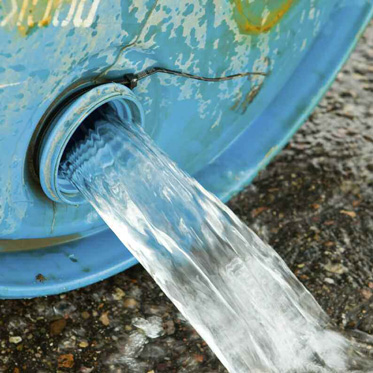-
Environmental
M&A Risk Management: Global Environmental Liability
As companies seek strategic merger and acquisition (M&A) growth opportunities across the world, they confront ever-expanding and stricter environmental liability regimes, posing significant import to these organizations and their directors and officers. Liabilities encompass a broad range of perils, including pollution, contamination, mold, hazardous waste, and toxic chemicals in water, air or on land. Identifying exposures and then assembling an effective insurance strategy to transfer environmental liabilities is a vital element of the M&A transaction process. This report addresses global M&A and environmental liability trends in the context of the exposures they create for directors and officers, and posits ways to effectively manage and transfer these risks. It builds upon a series of other ACE Progress Reports assessing M&A risks. http://www.acegroup.com/us-en/businesses/mergers- acquisitions-industry.aspx

-
 Environmental
EnvironmentalProtecting Against Environmental Risks in the Global Marketplace
Businesses today are reaching for opportunities by expanding operations in emerging markets around the world. Many will benefit from the potential for growth. However, new risks, including environmental exposures, must not be overlooked. A pollution incident can seriously damage a company’s investment in its own plant and property, necessitate an expensive clean up, result in significant fines, and cause lasting harm to its reputation. While U.S. businesses are accustomed to dealing with strict environmental regulations at home, more countries around the world, including emerging markets such as China, are tightening their own laws. In addition, environmental laws are continuously evolving, particularly in the United States and Europe, and the costs of failing to meet those standards is rising.
Before opening or expanding operations in a foreign country, companies should perform stringent due diligence to make certain they do not acquire environmental problems and to ensure that their operations conform not only to local laws in all the countries in which they operate, but also to global best practices. While U.S. companies may focus on potential liability claims, the more likely danger for most businesses is a pollution incident that damages their own property and which must be cleaned up, often at great expense. While companies may expect these exposures to be covered under their standard umbrella or commercial general liability insurance policies, they are typically excluded.
To protect their investments, companies should consider premises pollution policies that provide coverage for the first- party costs of environmental remediation as well as the potential third-party liabilities arising from on-site incidents. Because environmental laws are constantly changing, that coverage should be adaptable and provide protection for changes in regulations as well. Companies may want to consider coverage that provides expert help in a crisis to manage any resulting threat to their reputation. Besides the financial and regulatory concerns, more businesses are realizing that environmental stewardship of their land and property simply makes long-term economic sense in terms of protecting asset values and their own valuable reputations.
-
Environmental
Pollution: The Unrecognized Risk of Business Operations
As society grows ever more environmentally aware, a far broader spectrum of enterprises face new, and often unrecognized, pollution risks from their day-to-day operations.
Employees and clients, as well as nearby businesses and residents, are much more concerned about the potential risks to themselves, their property and their livelihoods from activities that may lead to pollution. In addition, a far greater range of activities today are subject to continually evolving environmental laws and regulations on the federal, state and local level. This heightened public awareness combined with intensified regulatory scrutiny, has increased the potential environmental exposures for businesses across the board.

-
 Environmental
EnvironmentalEmerging Environmental Risks in the Healthcare Industry
Healthcare in the United States is in the midst of unparalleled transformation, driven in large measure by the Patient Protection and Affordable Care Act. Healthcare will continue to undergo rapid change as a result of technological developments, an aging population, economic forces and evolving patient expectations. Concurrent with these transformations in healthcare, the US Environmental Protection Agency (EPA) has embarked on an ambitious effort to restore momentum to its core programs.
Many of the environmental exposures of healthcare organizations may fall under these core programs or similar state regulations, making it important that healthcare organizations – including hospitals, labs, MRI facilities, clinics and physician offices – maintain a sharp focus on environmental compliance. Maintaining this focus and identifying emerging environmental exposures while in a period of growth and rapid change will be a continuing challenge for risk managers, compliance officers and administrators.



